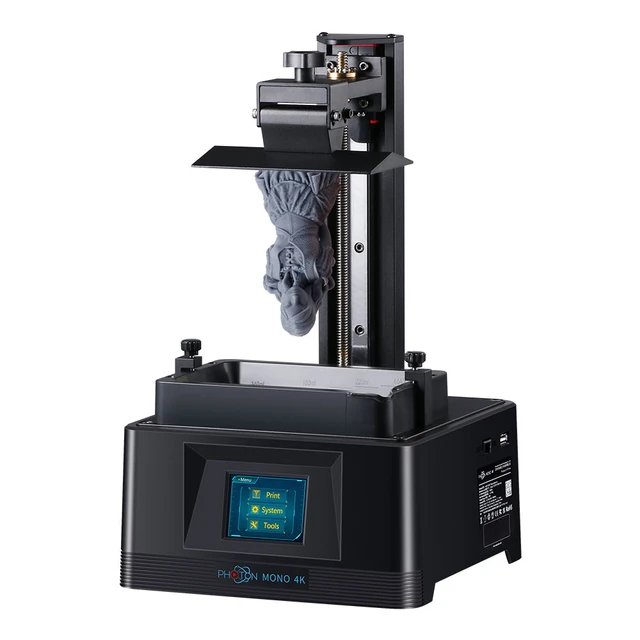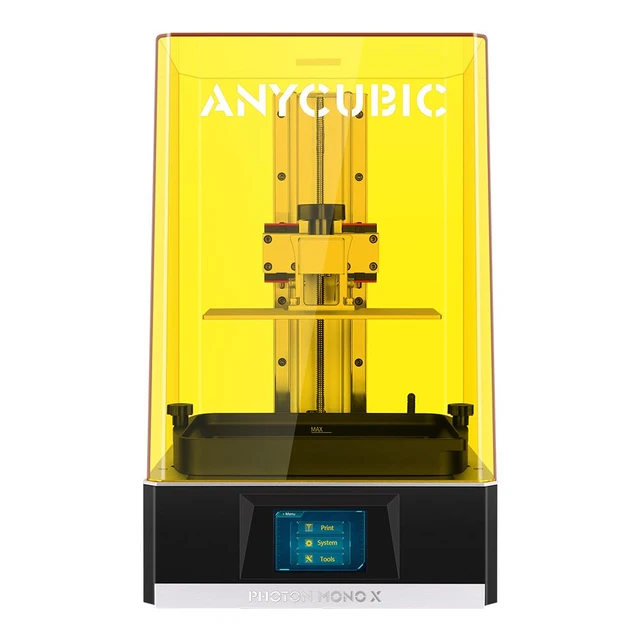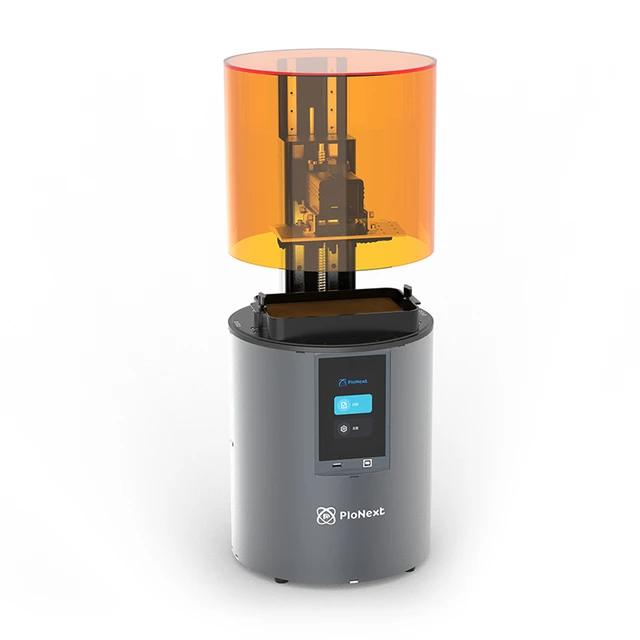3D printing technology has revolutionized the world of manufacturing, prototyping, and even hobbies. When it comes to choosing a 3D printer, two of the most popular types are resin and filament printers. Each offers unique advantages and caters to different needs and applications. So, how do you decide between a resin 3D printer vs filament printer for your projects? This article dives deep into the specifics, exploring the pros and cons of each, and helps you determine which would best suit your requirements.
Print Quality and Detail
One of the main factors to consider when comparing resin 3D printer vs filament printers is the quality and detail of the prints they produce.
Resin printers, also known as SLA (Stereolithography) or DLP (Digital Light Processing) printers, use liquid resin that is cured by a UV light source to create highly detailed and smooth objects. This technology typically results in higher resolution prints, making it ideal for intricate designs, miniatures, and detailed prototypes. The layer height on resin printers can be as fine as 25 microns, capturing even the tiniest details with astonishing precision.
On the other hand, filament printers, commonly referred to as FDM (Fused Deposition Modeling) or FFF (Fused Filament Fabrication) printers, use thermoplastic filaments that are melted and extruded layer by layer. While FDM printers have improved significantly over the years, they generally can’t match the fine detail level of resin printers. The layer heights for filament printers usually range from 50 to 300 microns. However, for larger, less detailed prints or functional prototypes, FDM printers are often more than adequate.
 Speed of Printing
Speed of Printing
Another critical consideration when choosing between a resin 3D printer vs filament printer is print speed.
FDM printers usually have an advantage in terms of speed, especially for larger objects. Filament printers can lay down larger layers more quickly, thus completing the print in less time. However, the speed can vary widely based on the layer height and the complexity of the object being printed.
In contrast, resin printers tend to be slower due to the detailed nature of the printing process. The curing of each layer takes time, and the process is more labor-intensive. Even though the print speed may seem like a drawback, the stunning detail and precision achieved often outweigh this disadvantage for many users.
Material Options
Material choice is another area where resin 3D printer vs filament printer differences emerge prominently.
FDM printers offer a broader range of material options. Standard thermoplastics like PLA (Polylactic Acid) and ABS (Acrylonitrile Butadiene Styrene) are commonly used, but there are also specialized filaments available. These include flexible TPU (Thermoplastic Polyurethane), strong and durable nylon, and composite filaments infused with wood, metal, or carbon fiber. This versatility makes FDM printers suitable for a wide array of applications, from simple hobby projects to industrial prototyping.
Resin printers, while usually limited to different types of resin, offer a variety of resin formulations tailored to specific needs. There are standard resins for general printing, tough resins for more durable objects, flexible resins, and even bio-compatible resins for medical applications. The main advantage of resin materials is the exceptional level of detail they can achieve, but they may not always be as strong or functional as materials used in FDM printing.
Ease of Use and Maintenance
When weighing a resin 3D printer vs filament printer, ease of use and maintenance are significant factors for many users.
FDM printers are generally considered more user-friendly, especially for beginners. Setup and calibration of filament printers are fairly straightforward, and many models come with features like automatic bed leveling and filament sensors that enhance ease of use. Cleaning and maintaining FDM printers are also more manageable, requiring less frequent and less complicated maintenance tasks.
Resin printers, in contrast, involve more complex setup and post-processing steps. Handling liquid resin requires careful attention, as resins can be messy and potentially hazardous if not managed properly. Moreover, post-processing tasks like washing the prints in isopropyl alcohol and curing them under UV light add extra steps to the workflow. The cleaning process for resin printers is also more involved, necessitating periodic deep cleaning to ensure optimal performance. Despite the initial learning curve, many people find the detailed, high-quality prints worth the extra effort involved in using a resin printer.
Cost Considerations
Cost is another crucial element when deciding between a resin 3D printer vs filament printer.
FDM printers are typically more affordable, both in terms of initial investment and ongoing operational costs. Entry-level filament printers can be found at relatively low prices, and the filament itself is usually cheaper than resin. This affordability makes FDM printers a popular choice for beginners and those on a tight budget.
Resin printers, due to their advanced technology and higher print resolution, tend to be more expensive upfront. The cost of resin for printing can also add up, and since resin has a shorter shelf life compared to filaments, this can contribute to higher ongoing costs. However, for applications requiring high precision and detail, the investment in a resin printer may be justified. Moreover, costs have been decreasing as technology advances, making high-quality resin printing more accessible to a wider audience.
Safety and Environmental Factors
Safety and environmental impact are important to consider when comparing resin 3D printer vs filament printers.
Resin 3D printing involves handling chemicals that can be toxic and require precautions, such as working in a well-ventilated area and wearing appropriate protective gear. The disposal of resin waste must be managed carefully to avoid environmental harm.
FDM printers are generally safer to operate, with the most common filaments being non-toxic and biodegradable, like PLA. However, some filaments like ABS can produce harmful fumes when melted, necessitating proper ventilation. Additionally, using recyclable filaments and managing the disposal of plastic waste can help minimize environmental impact.
Both printing methods create waste, whether in the form of failed prints, support structures, or excess material. Each type has its own protocols for waste management and recycling, so it’s essential to properly dispose of or recycle materials to minimize environmental impact. Raising awareness about sustainable practices and choosing eco-friendly materials can also contribute to reducing the environmental footprint of 3D printing.
Application Suitability
Understanding your project needs is vital when choosing between a resin 3D printer vs filament printer.
For intricate models, miniatures, jewelry, dental models, and applications where surface finish and detail are paramount, a resin printer is ideal. The high resolution and ability to capture fine details make resin printers well-suited for these tasks.
FDM printers excel in producing functional prototypes, mechanical parts, large-scale models, and household items. If strength, durability, and material flexibility are more critical than surface finish, an FDM printer is likely the better choice. Educational institutions also prefer filament printers due to their ease of use and the affordability of both the printers and the materials.
Future Developments
As 3D printing technology continues to evolve, both resin and filament printers are likely to see significant advancements. Emerging technologies and materials promise to enhance the capabilities and applications of both types of printers.
In the world of resin printing, innovations like faster curing times, less toxic resins, and improved post-processing methods are being developed. These advancements will likely reduce the complexity and increase the accessibility of resin printing, making it a more attractive option for a broader range of users.
For filament printing, new materials and improved print speeds are on the horizon. Enhanced printers with better precision and more advanced features will continue to push the boundaries of what’s possible with FDM technology, maintaining its relevance in the 3D printing industry.
Conclusion
When deciding between a resin 3D printer vs filament printer, there are many factors to consider, including print quality, speed, material options, ease of use, cost, safety, and application suitability. Each type of printer has its strengths and weaknesses, making them suitable for different types of projects and user needs.
If detailed, high-quality prints are your priority and you don’t mind the additional costs and maintenance, a resin printer might be the best choice for you. Alternatively, if you’re looking for versatility, ease of use, and robustness in your prints, a filament printer could be the ideal option.
By understanding these differences and how they align with your specific requirements, you can make an informed decision that enhances your 3D printing experience and brings your creative ideas to life. As technologies continue to advance, both resin and filament printers will offer even more exciting possibilities for makers, hobbyists, and professionals alike.


